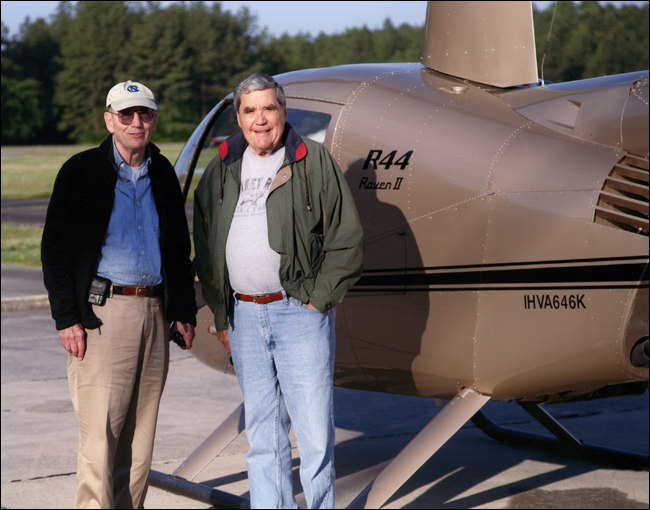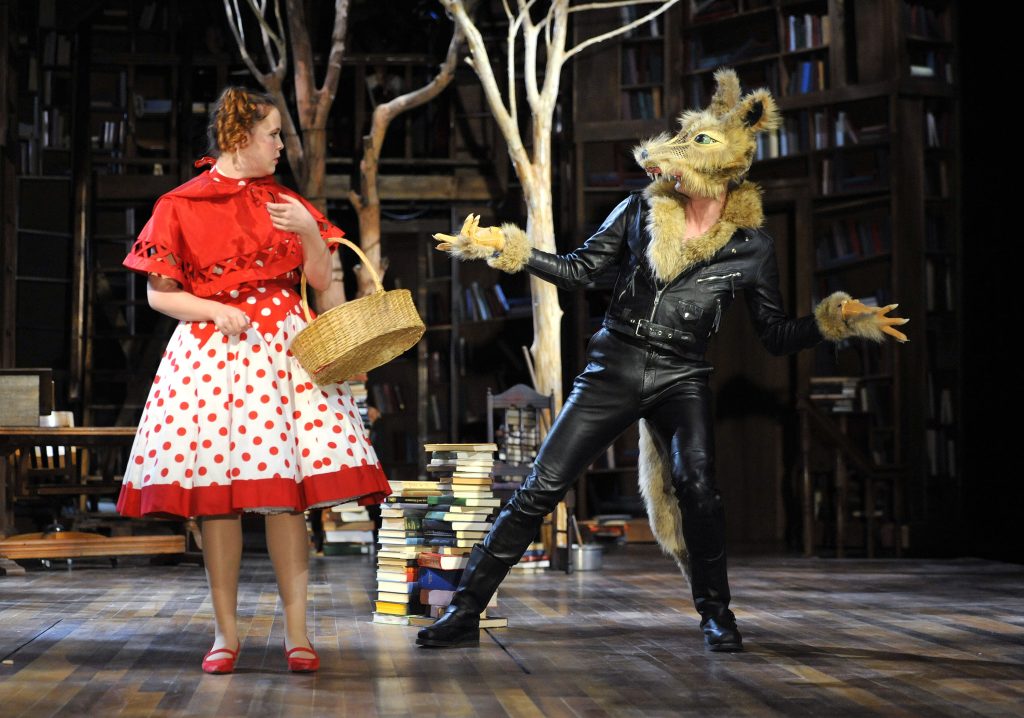
What was once the region’s largest mill under one roof is now the subject of the largest digital humanities project ever undertaken by the University.
Digital Loray came together through a near-perfect alignment of business, philanthropy, volunteerism, education and technology. Preservation North Carolina president Myrick Howard and Loray Redevelopment LLC partner Billy Hughes wanted to include the 113-year history of Gastonia’s Loray Mill in a $39 million transformation of the structure into modern apartments, offices and stores. The developer set aside 1,100 square feet at entry level for a history center, as a resident amenity and visitor attraction. More than a decade ago Carolina alumnus Rick Kessell had contributed the funds for the center in honor of his father, Alfred C. Kessell, who had worked in the mill for more than 25 years. By the time the 630,000 square foot mill re-opened in the winter of 2015, its redevelopment had taken 15 years.
Robert Allen, director of Carolina’s Digital Innovation Lab (DIL) in the College of Arts and Sciences, saw the renovation of the iconic mill as a unique opportunity to collect, preserve and share both the history of the mill and the stories of some of the tens of thousands of people who have worked there and lived in the mill village over the last century. The DIL focuses on bringing together the humanities and digital technology, promoting community involvement, assuring public access and building systems that can be easily adapted to other projects.
As restoration work on the mill finally got started in the summer of 2013, Howard and Hughes asked Allen to work with local volunteers and cultural heritage organizations to identify images and other historical material documenting the mill’s long and, at times, tumultuous history that might be displayed in the planned history center. Two years later, the Digital Loray project has identified and made digitally accessible more than 1,500 items, with more being discovered and added every week.
 The project has grown into a partnership among a far-sighted historical property developer, multiple University units, local and state-wide preservation and cultural heritage organizations, and members of the local community.
The project has grown into a partnership among a far-sighted historical property developer, multiple University units, local and state-wide preservation and cultural heritage organizations, and members of the local community.
Digital Loray is not only DIL’s biggest project so far, it’s also the most ambitious public digital humanities project the University has ever undertaken, according to Allen, James Logan Godfrey Distinguished Professor of American Studies. The DIL was set up in 2011 and is funded by the College of Arts and Sciences. It develops interdisciplinary, collaborative projects that extend humanities scholarship across and beyond the campus through the use of digital tools.
The project has received key support from several other sources, including a $25,000 gift to support digital public humanities work from Preservation UNC as well as the $75,000 that Allen received in 2008 as the first recipient of the recipient of the C. Felix Harvey Award To Advance Institutional Priorities. Proceeds from the Harvey Award were used to design the software platform for “Main Street, Carolina,” a flexible, web-based platform that allows libraries, schools, historical associations and other local organizations to build densely layered historical maps of their downtowns.
Allen emphasized the critical role of the University Library, in particular the North Carolina Digital Heritage Center. It made possible the digital publication of hundreds of photographs held by the Gaston County Museum of Art and History and digitized the North Carolina Collection’s near-complete run of the mill newspaper published during the period of Firestone Tire and Rubber Company’s operation of the facility between 1935 and the mill’s closure in 1993.
Libraries and museums in small cities like Gastonia, 25 miles west of Charlotte, do not have the resources to create something like this on their own. The project required a top public research university with a commitment to engaged scholarship, said Allen, who grew up in Gastonia and has family roots in the Loray/Firestone community.
“This is a great example of the impact the University can have in local communities across the state,” Allen said. “We are uniquely capable and positioned to do this.”
The Place

Loray Mill is massive. A Romanesque Revival tower looms over five stories of red brick framing banks of tall windows. The interior is more than a half-million square feet.
Founded by two local families (Love and Gray) the Loray Mill dominated Gaston County’s economy as much as it did the landscape. Like most mills of the era, it was its own community, equipped to make its own bricks and shoe its own horses. More than 1,000 employees lived in the 30-block, company-owned village adjacent to the mill.
In 1935, Firestone Tire and Rubber Company bought the mill to produce tire fabric. At the height of production, 2,500 people worked in the mill. Firestone began to sell the mill houses to their tenants in the 1940s. In 1993, Firestone closed Loray and moved its operations to King’s Mountain.
But the mill was preserved. While other vacant textile mills were reduced to rubble, Loray Mill survived because Firestone donated the property to Preservation North Carolina in 1998. The mill and about 350 surrounding mill houses now comprise a National Register of Historic Places district.
The Data
Documentation of the mill’s 110-year history has been sporadic at best. No company papers survive to provide any historical record of the tens of thousands of families who worked and lived in the mill. But in 1908, famed photographer Lewis Hine came to Loray to document child labor practices. Allen ran across his portraits of grubby working kids, several of whom lived on the same street as his grandfather, in the Library of Congress. The mill is also famous for the violent Loray Mill strike of 1929, when a policeman and a labor activist were both killed in the turmoil of an attempt to organize a union.

Many publications of the day ran stories and images about the strike and related murder trial, some now digitized. The North Carolina Digital Heritage Center (housed in Wilson Library) also digitized the whole 1952–1993 run of Firestone News, the company newspaper. Census forms provide a data snapshot every 10 years. Gastonia residents and former employees, the Gaston County Museum of Art and History and the Gaston County Library also allowed the team to digitize photos, clippings and other artifacts.
he ever-expanding digital archive includes more than 2,000 images scanned and documented as much as possible. The items have color-coded frames and can be viewed by topic, location or source. Census data combined with fire insurance maps inform an interactive map of the mill village in the 1920s. Click on a house to see its address and photo. Then click on the dot representing a resident of the house and discover the person’s name, address, race, occupation and relationship to the householder. Students in Allen’s 2015 spring seminar traced the journey of African-American families from farm work in South Carolina to mill work at Loray.
The Historian
The public face of Digital Loray is Julie Davis, who joined the team in September 2014 as a Carolina Digital Humanities Initiative Postdoctoral Fellow, supported through a grant from the Andrew W. Mellon Foundation. Davis is project director and historian-in-residence at the mill. (The developer is subsidizing one of the new loft apartments there for her use.) She is working with local organizations to create innovative public programming that makes full use of Digital Loray.
One of her first jobs was to incorporate history into the March 26 grand re-opening of the mill, attended by more than 400 business and civic leaders, including Gov. Pat McCrory. Davis and her team worked with community partners to produce content for six interactive history stations placed throughout the event space.
The Students
Carolina students have done much of the research needed to populate Digital Loray, not only online but also by going to Gastonia to meet with community members, hear their stories and dig through boxes of memorabilia.
The interactive map of the mill village in the 1920s began as an independent study project by Karen Sieber, who is combining a major in American Studies with a self-designed concentration in urban history. From a six-block visualization, the map expanded to more than 100,000 data points on over 2,000 residents of the mill village in 1920. Now Sieber is preparing to collect data for 1930, to track demographic changes over time. The archive also includes seven household spotlights prepared by Sieber and five American studies graduate students that give more details about the families and their history.
Elijah Gaddis, a doctoral student in American studies, has worked on the project for the past 18 months. He built and imaged the database for the digital archive and created the online displays of the archive and timelines of the mill’s history.
“Doing this kind of work on a more institutional level is really important and is something that I want to see UNC doing more of, both as a student and as a North Carolinian,” said Gaddis, a native of Cabarrus County.
Lindsay Ogles is a recent graduate of the School of Information and Library Science who also worked with the North Carolina Collection. For the Loray Mill project, she is designing a 3D map of the mill village, complete with virtual peeks inside based on floor plans.
The Community
 The Digital Loray team is adamant that they couldn’t have done their work without the help of the community. Specifically, Passmore and Lucy Penegar, vice chair of the Gaston County Historic Preservation Commission, both contributed thousands of photos and artifacts to the project and led mill tours.
The Digital Loray team is adamant that they couldn’t have done their work without the help of the community. Specifically, Passmore and Lucy Penegar, vice chair of the Gaston County Historic Preservation Commission, both contributed thousands of photos and artifacts to the project and led mill tours.
In exchange, Gastonia residents get what Sieber calls “an anchor” for their memories, a digital anchor they couldn’t have made by themselves. “There is not a person in town without some sort of connection to the mill, even if they themselves never worked there,” she said. “People crave a place where they feel their stories, and often the stories of the generations that came before them, are heard.”
Eventually, the mill and its history center could become a destination for tourists, history lovers, researchers and genealogists.
Meanwhile, the team still needs the help of the community for this ongoing project. They encourage anyone with stories to tell and memories to share about the mill or the village to contact them through the loraydigital.org website or by emailing loraydigital@unc.edu.
Allen said there is hope the Loray redevelopment project, which represents a $40 million investment, will spur economic development in the surrounding community.
The Future

The DIL is using Digital Loray as a laboratory for extending the work of the humanities at Carolina into communities across the state and throughout the country.
“Through this project, we are learning how to leverage the capabilities and resources of a public research university to help communities preserve their cultural heritage and history,” Allen said.
At the same time, they are learning how this kind of engaged scholarship can be “brought back” to Carolina and used as part of undergraduate teaching and graduate training.
“This is the most exciting and energizing thing I’ve worked on in my 37 years at the University,” he said.
By Susan Hudson, Gazette, and Claire Cusick, Office of University Development. Photos by Dan Sears.



